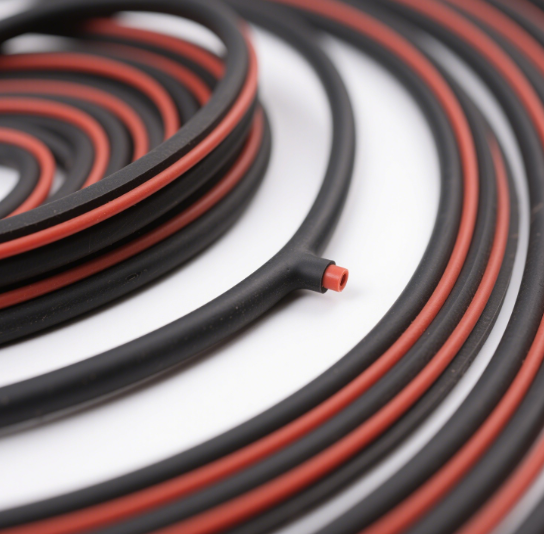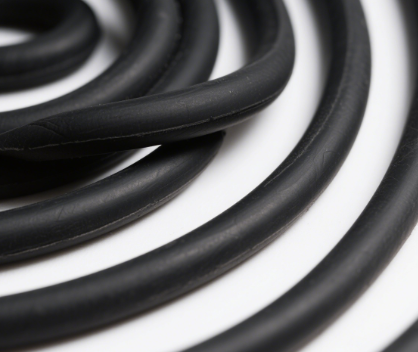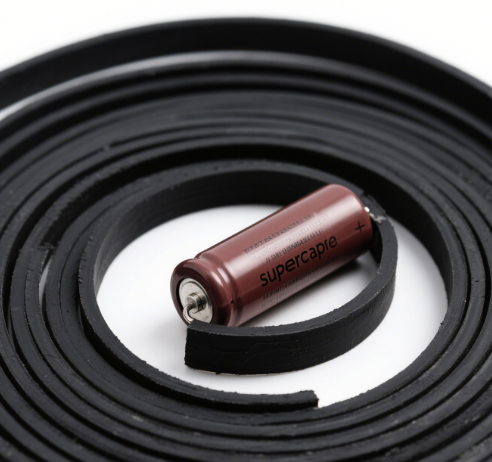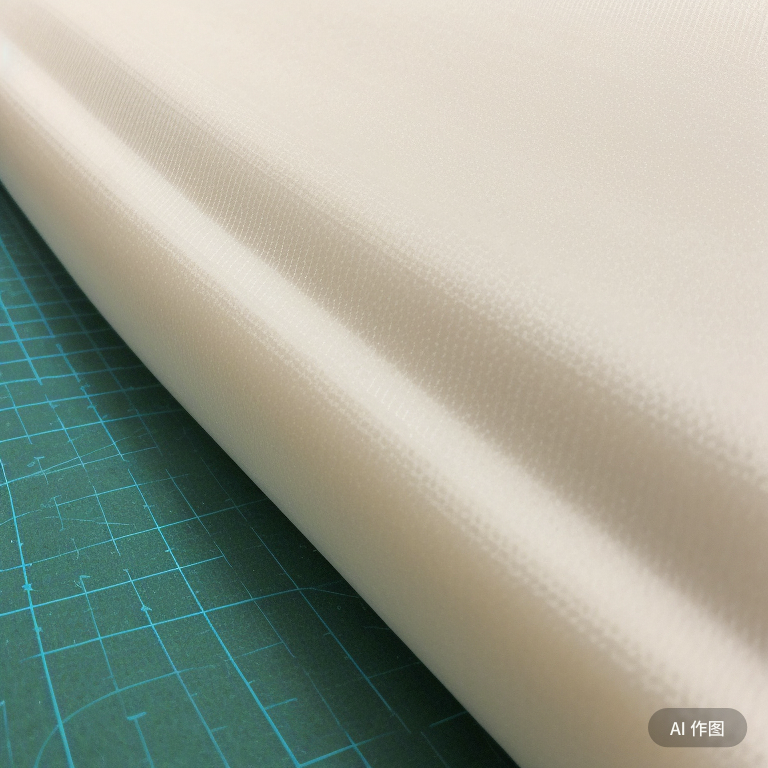Application Scenarios of Biocompatible Conductive Rubber
2025/04/17
0
Biocompatible conductive rubber, with its unique characteristics of safety, conductivity, flexibility, and adaptability to biological tissues, demonstrates diverse application values in fields such as medical health, wearable devices, and tissue engineering. The following analysis starts from the core scenarios and unfolds with specific cases and technical advantages:
- Medical Field: Full-chain Application from Implantable Devices to In Vitro Diagnosis
- Implantable Medical Devices: Long-term Safe In-vivo Electrical Connection
- Cardiac and Neural Regulation:
Traditional metal electrodes (such as platinum-iridium alloy) have excellent conductivity, but there are risks of tissue rejection and thrombosis. Biocompatible conductive rubber (such as the PEDOT:PSS hydrogel electrode developed by MIT) can be directly attached to the myocardium or spinal cord, stably transmitting electrical signals through a flexible conductive network, and the degradation products of the material are non-toxic. Case: In a rat experiment, this electrode did not cause inflammation 2 months after implantation, and the cardiac pacing efficiency increased by 15%. - Drug Sustained-release Carrier:
Conductive rubber can carry antibiotics or growth factors, such as polypyrrole (PPy)/silicone rubber composite membrane, which can release drugs slowly while conducting electrical signals, and is used to treat chronic wounds or prevent implant infections.- In Vitro Monitoring and Rehabilitation Devices: Comfortable and Precise Surface Signal Acquisition
- Flexible Electrode Patches:
Traditional Ag/AgCl electrodes require the coupling of conductive gel, which is likely to cause skin allergies. Biocompatible conductive rubber (such as CSR-PDMS gradient material) can be directly attached to the skin to collect ECG and EMG signals through customized 3D printing design. It can still maintain conductive stability with a stretch ratio of up to 400%. It has been used in the heart rate monitoring patch for premature infants to avoid skin damage caused by repeated sticking. - Smart Prosthetic Interface:
The nerve-mechanical interface made of conductive rubber (such as carbon nanotube/silicone rubber composite material) can transmit the electrical signals of the residual limb muscles to the prosthetic limb in real time, increasing the control accuracy by 30%, and at the same time reducing the skin friction damage caused by metal electrodes.- Tissue Engineering and Regenerative Medicine: Electrical Signal-guided Cell Growth
- Conductive Scaffold Materials:
In the field of nerve regeneration, graphene/chitosan conductive hydrogel can simulate the electrical conduction characteristics of nerve fibers and promote the growth of neuron axons. Case: Research by Southern Medical University shows that after this material is implanted into rats with spinal cord injury, the axon regeneration speed increases by 25%, and the motor function recovers significantly. - Myocardial Repair Patch:
When the self-healing ionic hydrogel (such as PAAm/PEGDA dual-network material) is attached to the infarcted myocardium, it can synchronize the beating of myocardial cells through electrical signals, and at the same time release vascular endothelial growth factor to promote the formation of new blood vessels.
- Wearable Devices: Flexible and Comfortable Carriers for Health Management
- Sports and Health Monitoring
- Integration into Smart Clothing:
The liquid metal fiber felt (developed by The Hong Kong Polytechnic University) embedded in sportswear can monitor the heart rate and respiratory rate in real time. The air permeability reaches 2000 g/(m²・24h), solving the problems of stuffiness and skin sensitization of traditional electronic devices. - Continuous Blood Glucose Monitoring:
The minimally invasive sensor made of conductive rubber (such as PEDOT:PSS/silicone rubber microneedle array) can penetrate the superficial layer of the epidermis to collect glucose signals in tissue fluid, and the flexible structure avoids mechanical damage caused by long-term wearing.- Personalized Medical Monitoring
- Infant Body Temperature Patch:
The conductive patch modified based on natural rubber (added with silver nanoparticles and coated with a PEG protective layer) can be attached to the baby’s skin to continuously monitor the body temperature. Its biocompatibility has passed the USP Class VI certification, avoiding chemical irritation. - Elderly Fall Detection Device:
The highly stretchable conductive rubber (tensile strength 8 MPa, resistivity 0.1 Ω・cm) is used as the sensor matrix, embedded in the waistband or knee pads. It can capture the fall action in real time through the change of deformation resistance, and the response time is less than 50ms.
III. Industrial and Special Scenarios: Dual Adaptation of Safety and Function
- Electromagnetic Shielding of Medical Equipment
Medical-grade conductive silicone rubber (such as the silver-filled product of Taixing Minghui) is used for the cable coating of MRI equipment. The shielding efficiency is greater than 60 dB, and it also meets the human contact safety standard, avoiding the signal pollution of electromagnetic interference to precision medical instruments. - Soft Robots and Bionic Devices
- Flexible Actuators:
The artificial muscle made of the composite of dielectric elastomer (DE) and conductive rubber has a tensile strain of up to 300%, which can simulate the movement of human joints. It is used for the flexible gripper of the abdominal surgical robot, and the grasping force can be adjusted between 0.5-2 N, avoiding the damage of rigid instruments to tissues. - Bionic Electronic Skin:
The conductive rubber imitating the structure of human skin (such as PDMS/carbon nanotube composite membrane) integrates pressure and temperature sensors, and is used for the tactile feedback of prosthetics. The pressure resolution reaches 0.1 kPa, and the temperature detection accuracy is ±0.5℃.
- Emerging Application Directions: Scenario Expansion Driven by Frontier Technologies
- Degradable Temporary Implant Materials
Polylactic acid (PLA)-based conductive rubber (doped with graphene quantum dots) is used for short-term nerve repair electrodes. After completing the function, it gradually degrades into CO₂ and H₂O, avoiding the risk of secondary surgery for removal, and its effectiveness has been verified in the repair of rabbit sciatic nerve. - Antibacterial Conductive Composite Devices
Conductive rubber loaded with nano-silver or chitosan (such as PPy/natural rubber composite material) has a surface resistivity of less than 10² Ω・cm, and at the same time, the antibacterial rate against Escherichia coli and Staphylococcus aureus is greater than 99%. It is suitable for catheters and dialysis pipelines that are in long-term contact with body fluids. - Environmentally Adaptive Smart Materials
The photothermal-responsive conductive rubber (such as eumelanin/silicone rubber composite material) can self-heal cracks under near-infrared light irradiation while maintaining its conductive performance. It is suitable for biological detection equipment in extreme environments (such as space and deep sea).
Core Advantages and Future Potential
The unique value of biocompatible conductive rubber lies in “safe conductivity + flexible adaptation”:
- Safety: Materials certified by ISO 10993 (such as medical silicone rubber and modified natural rubber) avoid the release of metal ions and the toxicity of nanoparticles, and are suitable for long-term contact with the human body.
- Functionality: The electrical conductivity is adjustable (10⁻³~10³ S/cm), and the tensile toughness is excellent (elongation at break 200%-1000%), meeting the diverse needs from rigid implantation to flexible attachment.
- Integration Potential: Combined with 3D printing and micro-nano processing technologies, it can customize the manufacture of complex structures (such as vascular stent electrodes and curved surface sensor arrays).

















